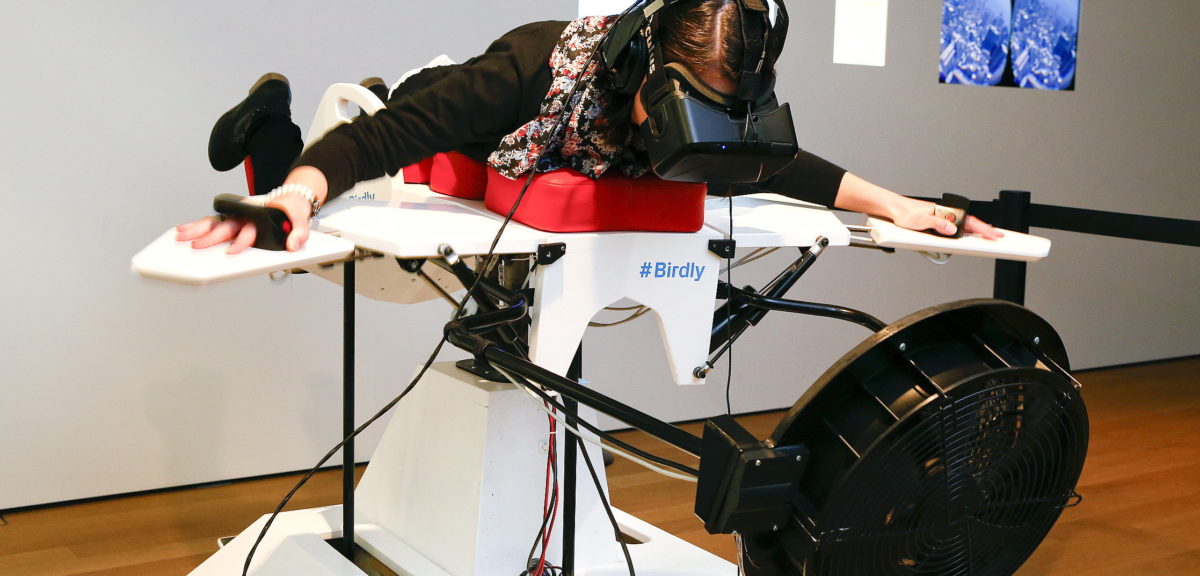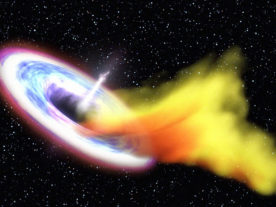
A visitor tries the flight simulator ‘Birdly’ at the exhibition “Animated Wonderworlds” at Zurich’s Museum for Design, 11/17/15. Birdly simulates the flight of a red kite over New York City, controlled by the entire body of the user. The flight simulator was developed by scientists at Zurich University of the Arts. (Reuters)

Technicians inside a clean room at NASA’s Langley Research Center, in Virginia, prepare the Stratospheric Aerosol and Gas Experiment III (SAGE III) instrument for shipment to NASA’s Kennedy Space Center on 11/24/15. The ozone and aerosol-measuring instrument is set for a March 2016 launch to the International Space Station. (NASA)

Archaeologists work at a recently discovered tomb of the Ichma prehispanic culture in Lima’s Huaca Pucllana ceremonial complex at Miraflores district in Lima, 11/26/15. The tomb is estimated to be more than 600 years old, archaeologists said on a press release. (Reuters)

The European Space Agency’s European Service Module arrived in Cleveland during 11/15 and was transported to NASA Glenn’s Plum Brook Station for testing in the Space Power Facility in 2016. (NASA)

Here’s an 11/26/15 photo of the 500-metre aperture spherical telescope named FAST under construction in the Guizhou province of China. The telescope, which will be the world’s largest, will be put in use by Sept. 2016, according to local media. (Reuters)

In this photo released 11/4/15 by the European Southern Observatory, engineers from Onsala Space Observatory’s Group for Advanced Receiver Development are seen here examining the top part of the Swedish-ESO PI receiver for APEX (SEPIA) before its installation at on the Atacama Pathfinder Experiment (APEX) telescope in Chile. (ESO/Sascha Krause)

Inna Nosikova exits a mock-up spaceship after an eight-day simulated flight to the moon, in Moscow, Russia, on 11/6/15. Nosikova and her five female colleagues climbed into a grounded space capsule to imitate a lunar flight and test the effects of confinement and stress that come with space travel. (AP)

David Wolff, a research scientist with NASA, opens the door to a mobile workspace on a hilltop near Moclips, Washington on 11/6/15. Wolff and other scientists measured raindrops and snowdrops in one of the wettest spots in the US. Scientists are attempting to validate, on the ground, how well global satellites measure precipitation from space. (AP)

After sitting behind the sun for nearly a year NASA’s Solar and Terrestrial Relations Observatory Ahead, or STEREO-A, resumed its normal science operations on 11/17/15. This is an image of the sun taken with the Extreme Ultraviolet Imager aboard STEREO-A. This image shows the sun in wavelengths of 195 angstroms, which are typically colorized in green. (NASA/STEREO)

In a photo released 11/24/15, NASA tests a new spacesuit developed for the Orion spacecraft. The space agency’s engineers used a mockup of Orion’s cabin in the aircraft to evaluate how astronauts can get into their seats during various operational scenarios, perform tasks at different suit pressures, and to test seat hardware. (NASA)
























Commissions are not charged by most forex platforms for android (http://www.openstreetmap.org/) brokers, but instead generate profits about the interacting spread.